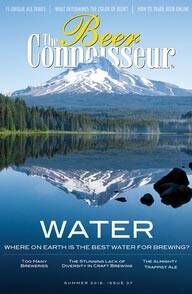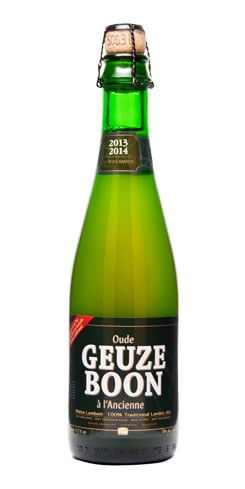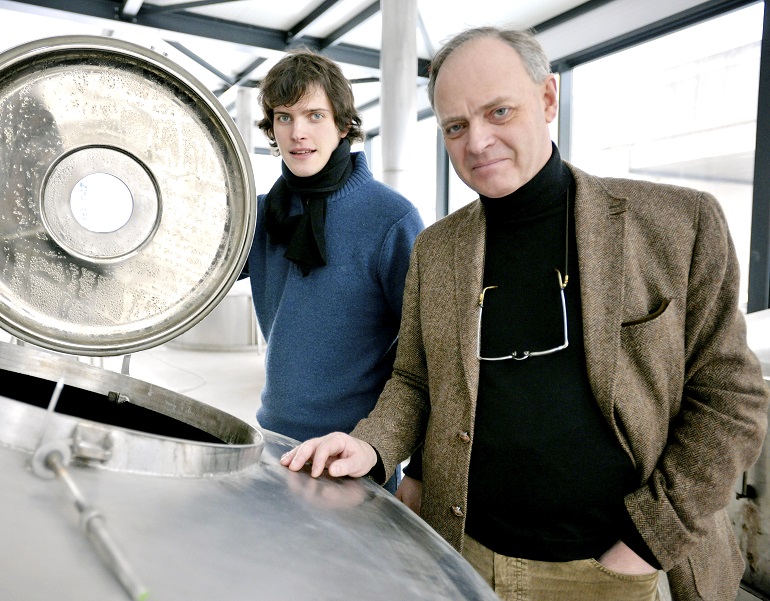Start 14-Day Trial Subscription
*No credit card required

Top 100 Beers of 2015 (Issue 22)
With a new year upon us, there comes a time when we must ruminate on our past. For us, that means a discussion of the best beers we reviewed in 2015.
There were a lot of changes for us in 2015, especially when it comes to our beer review. We greatly expanded the amount of beers we review for every issue – increasing the number from around 20 to upwards of 100! We gained many new judges and now have over 20 BJCP-ranked beer experts on call from all over the world ready to grade some of the best brews around.
In 2015, twelve beers we reviewed attained the level of “world-class,” ranging from obscure Belgian styles to ubiquitous American IPAs. Congratulations to all the breweries that achieved this status; your efforts have helped craft beer grow into a joyous celebration of delightful flavors and artistic experimentation, where nothing is off-limits and rules are meant to be broken.
For each beer that attained a world-class ranking, we interviewed one of the brewers that made that beer happen to discuss some of the beer’s backstory. Also, the judges have revisited the world-class beers they evaluated, discussing various topics that revolve around the best beers they reviewed in 2015.
Without further ado, here are the Top 100 Beers of 2015.
Top 100 Beers of 2015
Quick List
World Class (100 to 96)
1.
98
by Jim Koebel
Oude Geuze Boon
Brouwerij Boon
View Beer
Read Review
Brewer Q & A

Judge's Second Opinion
from Jim Koebel
I consider myself lucky to have heard about the Beer Judge Certification Program just as I began homebrewing and discovering good beer. It wasn’t long before I sat for the exam and began spending way too many Saturday mornings judging beer competitions. Since then, I haven’t looked back, which makes my personal history with beer virtually inseparable from my experience with homebrewing as well as the BJCP.
That’s probably the reason why – like a lot of folks, but maybe more than some – I have serious respect for stylistic accuracy. It’s safe to say that I have plenty of room for improvement as a homebrewer, so when I’m not drinking my own, it needs to be good. Beer fads have their place, but I’d prefer a well-brewed example of any given defined style regardless of whether it’s commercially created or homebrewed. Finding one in a particularly exacting style is icing on the cake.
Enter Oude Geuze Boon. I rated this beer a 98 out of 100 points in my review, meaning it’s a world class representation of the Gueuze style and one of the best beers available commercially. All things considered, this is a nearly perfect beer. In a few words, this beer’s most impressive qualities are its distinctiveness, balance and depth, resulting in something almost unrivaled in any other beer I have tasted in the last few years. The beer’s tangible qualities earned Oude Geuze Boon its score of 98 points, but it’s what those qualities represent that earns it the title of world-class.
Making gueuze requires an infrastructure that the overwhelming majority of homebrewers do not have. Consequently, in my experience, gueuze is one of the least entered styles in homebrew competitions, and the few that are entered often suffer from hard-to-avoid flaws. That’s not knocking homebrewers; it is simply a difficult style to make even for commercial breweries. One reason is that the lambics that are blended to make gueuze may, by themselves, be unpalatable – either too dry, too sweet or too acetic and sharp. Although the blending process will mitigate any extreme characteristics, it is still an unpredictable process relative to modern brewing. Uncorking a bottle of imported gueuze can be a game of Russian roulette of sorts; I know enough to do it over a sink in case an infection occurred during secondary fermentation or transport.
Still, they’re worth trying because they can be amazing beers. In Frank Boon’s Q & A with The Beer Connoisseur, he claimed that bottles of Oude Geuze Boon could be kept for twenty years. I’m not sure I could hang on to a bottle for that long without enjoying it, but I definitely believe him. The bottle I reviewed changed markedly while I drank it, presenting two different versions of itself. I have no idea what this beer would taste like in 20 years, but it certainly proved itself over the course of thirty minutes. Unlike the majority of other beers that would become undrinkable in that amount of time, this beer has the potential to become even better.
And that is no fluke. Oude Geuze Boon’s potential is the product of over a century of tradition, retooling and, probably, quite a few failed attempts. As Mr. Boon said, this beer has been brewed since 1899, but it was only perfected in 1975. That persistence is something any homebrewer can respect, and something every beer judge appreciates.
We can be pretty sure Mr. Boon didn’t spend the years leading up to 1975 tweaking his recipe so that Oude Geuze Boon would fit into the BJCP style guidelines (they didn’t exist then). Instead, as he put it, he was aiming for perfection. And look where it got him; it’s evident that the BJCP style guidelines for Gueuze were written around his beer. If that’s not representative of a World Class Beer, I don’t know what is.

Brewer's Thoughts
from Frank Boon
New Year’s Eve is a time of celebration. With a new year sprawled out before us, it feels like a new start – this is the year where everything will fall into place. The holiday is also rife with booziness, especially champagne. But for discerning craft beer drinkers, that super-sweet fizzy beverage can feel like the lowest common denominator so, next year, why not pop open a world-class alternative: Brouwerij Boon’s incredible Oude Geuze Boon, our highest-rated beer of 2015.
Our judge was blown away by the expert craftsmanship of this beer, saying that this Gueuze “typified both art and craft.” I spoke with the founder of Brouwerij Boon, Frank Boon, about one of his most widely acclaimed creations.
I asked Frank why he thought Oude Geuze Boon attained our highest score of 2015, and he gladly elaborated: “The use of wild yeasts, collected from the air of the Zenne River Valley in Belgium, make Oude Geuze Boon a beer that keeps for at least 20 years. To make Oude Geuze Boon we blend Lambics that are between 1-3 years old and re-ferment them in the bottle. Because of this blend, Oude Geuze Boon has the winy character of a fine white wine, the body of a good glass of beer and the phenolic and oaky qualities of a good glass of whiskey.”
The most difficult aspect of brewing Oude Geuze Boon is the aging of Lambic in oak casks. If something goes wrong during the aging process, the beer gets too vinegar-y and has to be drained. According to Frank, “To obtain a gentle, wine-like sourness, our brewers only brew in the seven cold months in Belgium, avoiding the wild yeast that can overpower the sour-making bacteria.
Many of the fine flavors found in Oude Geuze Boon are from the quality, and perfect aging process of the Lambic that go into the beer. “Well-aged Lambic will have lost its ‘young beer flaws,’ such as goatcheese and horse-sweat, which are sometimes mentioned as typical aromas and flavors for Gueuze are due to the use of too much young Lambic.”
Because Oude Geuze Boon blends young and old Lambic, it takes on the character of a good glass of champagne – the perfect accompaniment to a new year of drinking fine beer in 2016.



